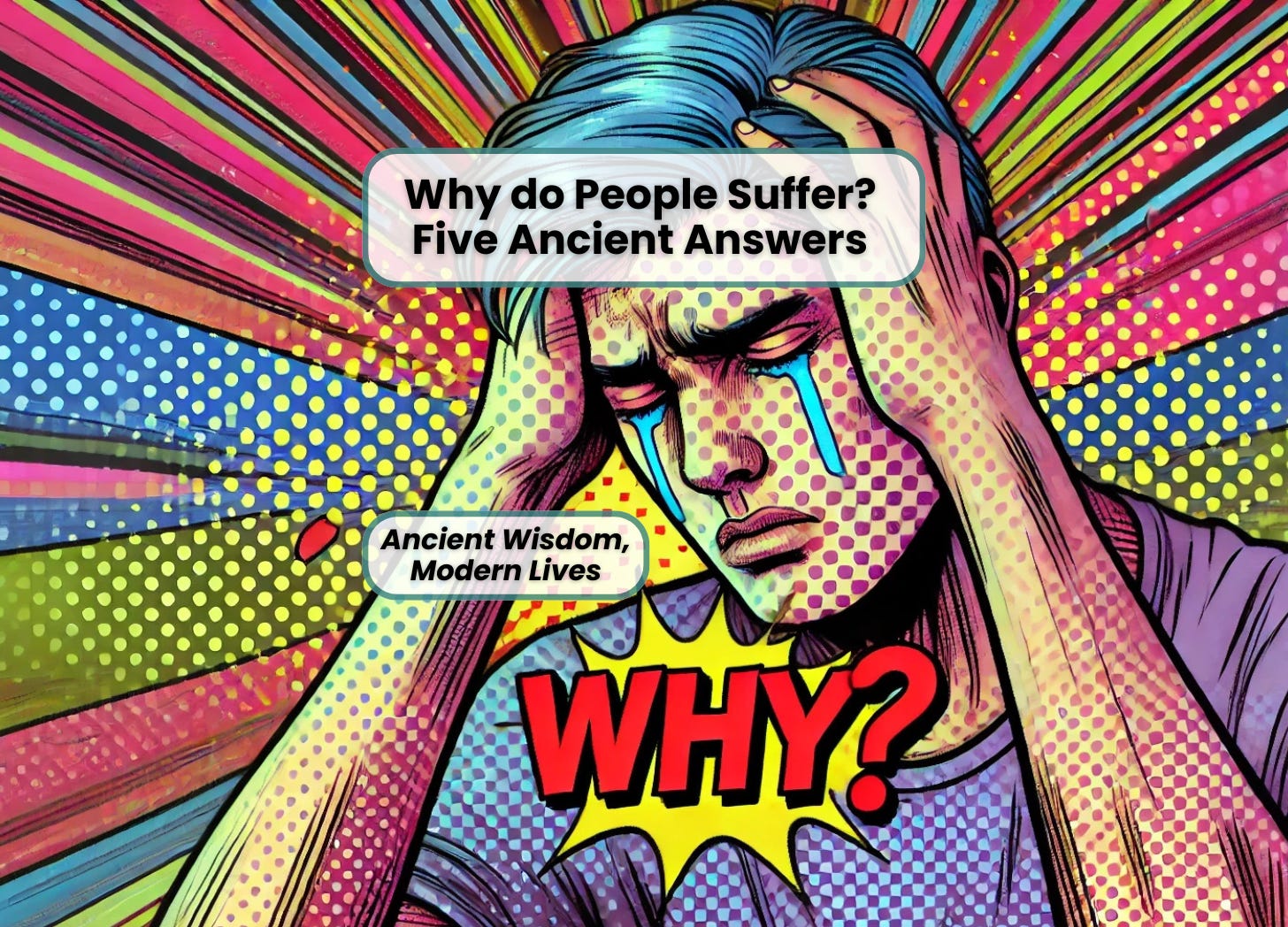What Goes Wrong when we Translate the Grammar
As with words, it makes intuitive sense that a translation should convey the grammar of the original.
But, again, our intuition leads us astray.
Here’s an example of what can go wrong if we try to mimic the grammar of one language when we translate it into another.
English and French
With rare exception, adjectives in English come before the nouns they modify. So in English we have “the good man,” not “the man good.” For this reason, when the Greek mneuma (“spirit”) and agion (“holy”) are combined to form the Greek mneuma agion, the English translation is not “spirit holy” but rather “holy spirit.”
Most adjectives in French go after the noun. So from un homme (“a man”) and americain (“American”) we have the French un homme americain, or, in translation, “an American man,” not “a man American.”
French is sometimes like English. The French word for “good” is bon, and we see how it’s used in the French phrase un bon homme, which becomes “a good man” in translation. The obvious (but, I think, wrong) reasoning is that we don’t change the order because the French word order makes sense in English.
I no longer actively write this blog, but you can find me at Ancient Wisdom, Modern Lives
Subscribe Now I'd love to see you there!Every so often English allows adjectives to follow the noun, as in, “he is interested in all things American.”
And every so often, French allows both word orders: pauvre means “poor,” and we find both un pauvre homme and un homme pauvre in French. The first one naturally becomes “a poor man.” But what about the second? Should we try to make it “a man poor”? That exact wording doesn’t work. But maybe “a man who is poor” is better? At least that one mimics the word order.
Similarly, we have both un homme ancien and un ancien homme. The first one can’t be “a man ancient” — that’s not English — so the obvious choice is “an ancient man.” And it turns out that that’s the right translation.
But what about un ancien homme? Based on what we just saw — “an ancient man” is, after all, grammatical in English — it would seem obvious that the translation should just be “an ancient man.” But that’s wrong, because un ancien homme means “a former man,” that is, someone who used to be a man. (It’s a potentially odd concept. Another illustration comes from chateau [“castle”]. The French un chateau ancien means “an ancient castle,” but un ancien chateau means “a former castle,” for example, a restaurant or museum that that used to be a castle.)
What’s going on is this: Adjectives in French sometimes change meaning depending on whether they appear before or after the noun. The naive strategy of looking only at the words and their order has led us astray. Even the first French example above, with un pauvre homme and un homme pauvre, is problematic. Both French phrases translate to “a poor man” in English, but with different meanings: the first one means “a pitiful man” while the second means “a not-rich man.”
Lessons
So we see that the grammaticality of the mimicked word order is no guarantee of a successful translation.
More generally, there’s a common intuitive strategy among Bible translators of mimicking the word order of the Hebrew or Greek in English, unless the English isn’t grammatical. We now see that that doesn’t work. Sometimes the word order will be grammatical and still wrong, and sometimes the correct translation involves changing the word order.
More generally yet, we see that what one language does with word order, another does with vocabulary.
And even more generally than that, we learn that translating the words and grammar separately doesn’t work. They have to be translated together.
Bible Bible translation grammar syntax translation word order






6 Responses
Excellent post.
A few notes:
* un homme ancien wouldn’t actually be an “ancient” man but just an “old man.” The resemblance to our word “ancient” is misleading;
* pneuma is “breath” and commonly translated “spirit” only by special pleading;
* translators routinely translate a host of very different word arrangements as “Holy Spirit” even though the Greek grammar clearly suggests readings like “the breath that is holy” and the like – again, trying to force a Trinity reading;
* word order indicates *emphases* as well as grammar. In English, we often put the most important word or qualifier at the *end* of a sentence. In Greek, bringing a phrase *forward* calls attention to it.
* a case in point is John 8:58, where the word order is often preserved:
“Before Abraham’s birth, I am” – but this is misleading. Because of the phrasing, it should read: “*I* am *before* Abraham comes to be!”
Here are some examples of the word order, lack of article, grammatical constructions, etc that are *ignored* by translators to consistently render a variety of texts as “The Holy Spirit”:
1Th 4:8 τοιγαρουν ο αθετων ουκ ανθρωπον αθετει αλλα τον θεον τον Aκαι TSBκαι Aδιδοντα TSBδοντα **το πνευμα αυτου το αγιον** εις BAυμας TSημας
Eph 4:30 και μη λυπειτε **το πνευμα το αγιον** του θεου εν ω εσφραγισθητε εις ημεραν απολυτρωσεως
Eph 1:13 εν ω και υμεις ακουσαντες τον λογον της αληθειας το ευαγγελιον της σωτηριας υμων εν ω και πιστευσαντες εσφραγισθητε **τω πνευματι της επαγγελιας τω αγιω**
Luk 4:1 ιησους δε Aπληρης **πνευματος αγιου** TSBπληρης υπεστρεψεν απο του ιορδανου και ηγετο εν **τω πνευματι Aεν TSBεις Aτη TSBτην Aερημω TSBερημον
And so on.
Older versions, prior to the KJV, might have preferred “ghost” (which means breath):
Luk 4:1 Iesus, being full of the holy ghost, returned from Iordane, & was ledde by the spirite into wyldernesse,
Word order…
yes we learned this lesson from the story bt Daudet many many years ago La dernière classe means the very last one not the previous one. But these examples don’t tell us when the meaning will change – there’s no rule that generalizes. We might still be wrong. So how do we guess right? It may even be that a native speaker would not notice our misconception for years – assuming we could find a native speaker.
The Daudet is here – a touching story
I think that the generalization is this: It’s a mistake to separate the words and the grammar. Rather than being translated separately (as, unfortunately, many versions do), they should be translated together.
In other words, the wrong approach is to ask (1) “how do I translate these words?” and (2) “how I do translate this word order?” The right approach is to ask “how do I translate these words in this order?” Usually the answer will be “with different words in a different order.”
[…] Bible Translation. Joel Hoffman has written on What Goes Wrong When We Translates the Words and the Grammar: a couple of fasinating posts (though I think my example here is an easier look at grammar). […]
There are two ways you can get this wrong.
For example, consider a language typology parameter, that of head-initial vs head-final. The worst way and most ignorant way to translate would be to aim for the same word order even between two languages which differ for this parameter.
The less ignorant way is to recognise that the languages differ for these parameters, and account for that by mapping words to the appropriate argument structure, and then expressing that argument structure according to the target language’s rules. But such a translation would still have many problems, because there’s always so much going on. Mimicking morphosyntax is not a good strategy for dealing with language above the level of argument structure!
[…] goes wrong when we translate the words” gives a sense of one problem; my post on “what goes wrong when we translate the grammar” gives another. My recent TEDx video explores the issue in more detail, and my And God Said […]